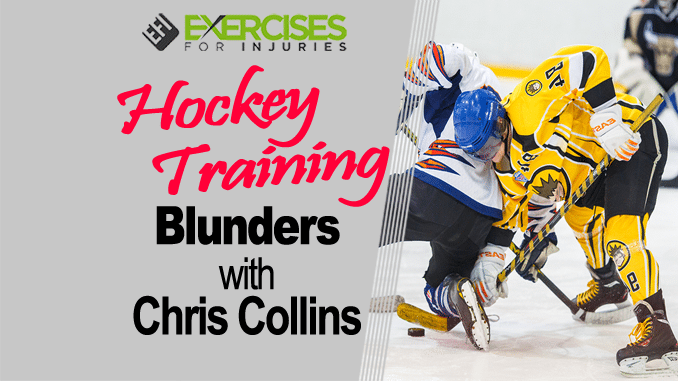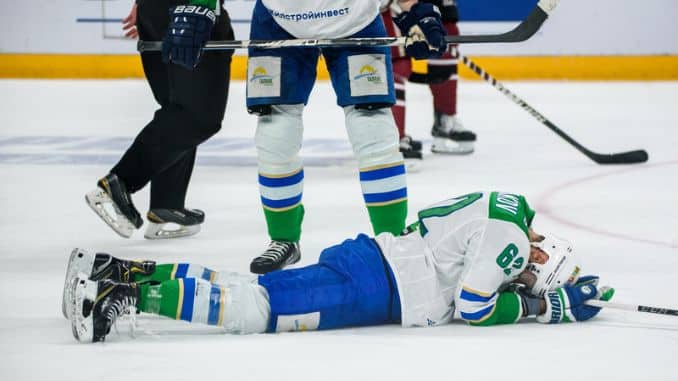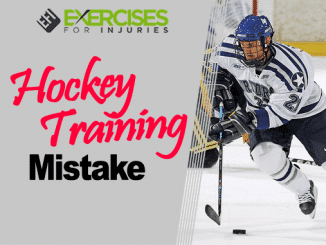
Hockey is a fast-paced sport that requires peak physical performance and mental acuity. As such, players need to have their wits about them at all times and not make avoidable mistakes. Unfortunately, some hockey players tend to make the same blunders again and again, which can limit their development as a player. Here’s an interview on some common hockey training blunders, along with how you can avoid falling into these traps.
A hockey player who was being treated by Chris Collins in Las Vegas suffered a contact injury. The player was still not fully healed when he was ready to return to play. He was evaluated to see whether the problem was mental or physical, which slowed down his overall return to hockey.
This article will explain seven of the most common training blunders hockey players make to improve their skills, conditioning, and overall game. If you’re currently involved with a team or are thinking about joining one soon, read for some helpful tips.
7 Worst Hockey Training Blunders You Must Avoid
Anyone can throw on the pads and a sweater and call themselves a hockey player. But not everyone is willing to put in the time and effort necessary to become a great hockey player.
1. Too Much Repetition
To improve at any skill, you must first understand the basic mechanics of that skill. If you don’t understand the basics of your movements, you won’t be able to correct them when they go wrong.
This is why so many hockey players focus on the fundamentals of hockey for hours on end. The problem is that once you understand the basic mechanics of skill, you should move on to training the craft itself. If you don’t, you end up wasting your time and energy on the basics and not training.
The most prominent training blunder of hockey players spend too much time on the basics. You must learn the basics, but you can’t spend the rest of your hockey career training them. This means you should focus on the basics for about six to eight weeks and then give them about two weeks off before you repeat the process.
2. Stretching Is Neglected
Hockey is fast-paced, so many players focus on training their cardio to build up their endurance. This is fine, but it also means they neglect their flexibility and stretching exercises.
While it’s essential to have good cardio and perseverance, you can’t complete any task if your body isn’t working together as one unit. You must include a stretching and flexibility training routine in your weekly training schedule. Focus on stretching your hamstrings, calves, glutes, quads, and hip flexors for best results.
You’ll also want to try it after each session with your team or at the gym. This will allow your muscles to recover from the work better.
3. Incorrect Fitness Training
While you should always work on your flexibility, building up your strength and cardio is also essential. This may come as a surprise given the previous section on stretching, but it’s vital to understand that flexibility is only one-half of the fitness equation.
You also need to build strength and endurance through cardio. For example, if you want to be a better skater, you shouldn’t train your leg strength by squatting or leg pressing.
You should focus on skating to build up your leg strength, which will allow you to slide faster and longer. This will enable you to play longer and more intense hockey games without feeling too tired. And remember, you can’t just focus on one area of your body.
You must train your entire body to maintain overall health. You may consider joining a hockey-specific gym or signing up for a CrossFit program to improve your fitness.
4. Over-Training Or Incorrect Technique During Practice
As we covered in the first section, you must also train in the basics of hockey. But if you’re over-training, you’ll become bored and lose interest in the sport.
This means that you must mix up your training with some variety. You could try new drills, different times of the day to train (like after work or before bed), or even different settings where you teach (like an outdoor rink or an indoor gym).
For example, if you usually practice skating after work, you may want to try skating before work one day to shake things up. If you typically skim outside, you may want to try skating one day indoors to change things up.
Always be sure to mix things up and add in a little variety so that you stay interested in the sport.
5. Poor Nutrition Habits
This one is simple: if you eat poorly, you will not perform as well in hockey or in life. Hockey is very strenuous, so consuming the right calories is essential. You don’t want to eat too little or too much, but just enough to keep you going throughout the day.
If you’re doing an intense training program like CrossFit, you will need more calories than someone who is just skating a few times a week. Ensure you get enough calories to sustain your body throughout the day.
Eating too little means, you’ll feel tired and have low energy levels. If you’re overeating, you’ll gain weight and tire out quicker during intense games and practices.
You should also make sure to eat enough protein and iron. Protein is essential for building muscle, and iron helps you recover after a hard workout.
6. Playing While Injured
This is a massive mistake that hockey players make when trying to improve their game. You should rest and allow your body to heal if you’re injured.
If you continue playing while impaired, you will only prolong your recovery time and worsen the problem. You should also see a doctor if unsure about a potential injury.
If you don’t heal properly, you could end up damaging your body and costing yourself a lot of time on the ice. You must take time off to let your body heal when you get injured. If you’re unsure when to start playing again, you should consult a doctor.
If you continue to play while damaged, you’re likely to worsen the injury, and you may be forced to take even more time off.
7. Insufficient Equipment Maintenance Or Repair Mistakes
While always having the best possible equipment is essential, it’s also important to maintain it. If you want to stay on the ice, you must ensure that your stick and skates are in good shape.
It is important to fix your equipment before they break entirely if you notice that they are worn down. If you’re not sure how to mend your gear, you should seek out a professional to do so.
Poor equipment maintenance can be the difference between scoring a goal and getting scored on. Keep your skates sharp and your stick broken, so they move freely. This will help you to receive more accurate passes and shoot more accurately.
Takeaway
Hockey is a high-impact sport, so proper training is crucial. If you make the following blunders, you could harm your game and even risk injury.
Insufficient equipment maintenance can be the difference between scoring a goal and getting scored on. If you make these seven blunders, you could harm your game and even risk injury. If you make these seven blunders, you could damage your game and even risk injury.
Remember, you get what you pay for when it comes to hockey equipment. If you make these blunders, you could harm your game and even risk injury. If you make these blunders, you could damage your game and even risk injury.
Other blog posts on hockey and hockey injuries:
- Muscle Imbalances and Hockey Players
- Hockey Training Mistakes
- What to do about Hockey Groin Injuries?
If you are an ice hockey player and are looking for a program to help with your hips or groin pain, check Sacroiliac Pain Solution
.




